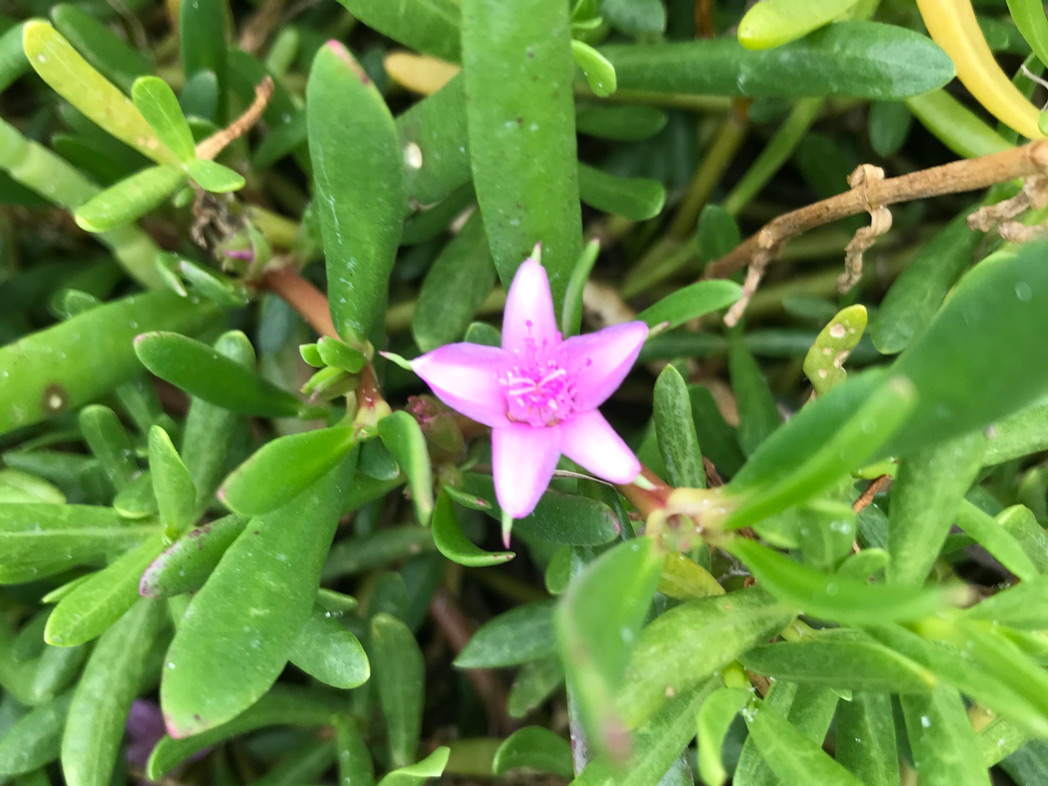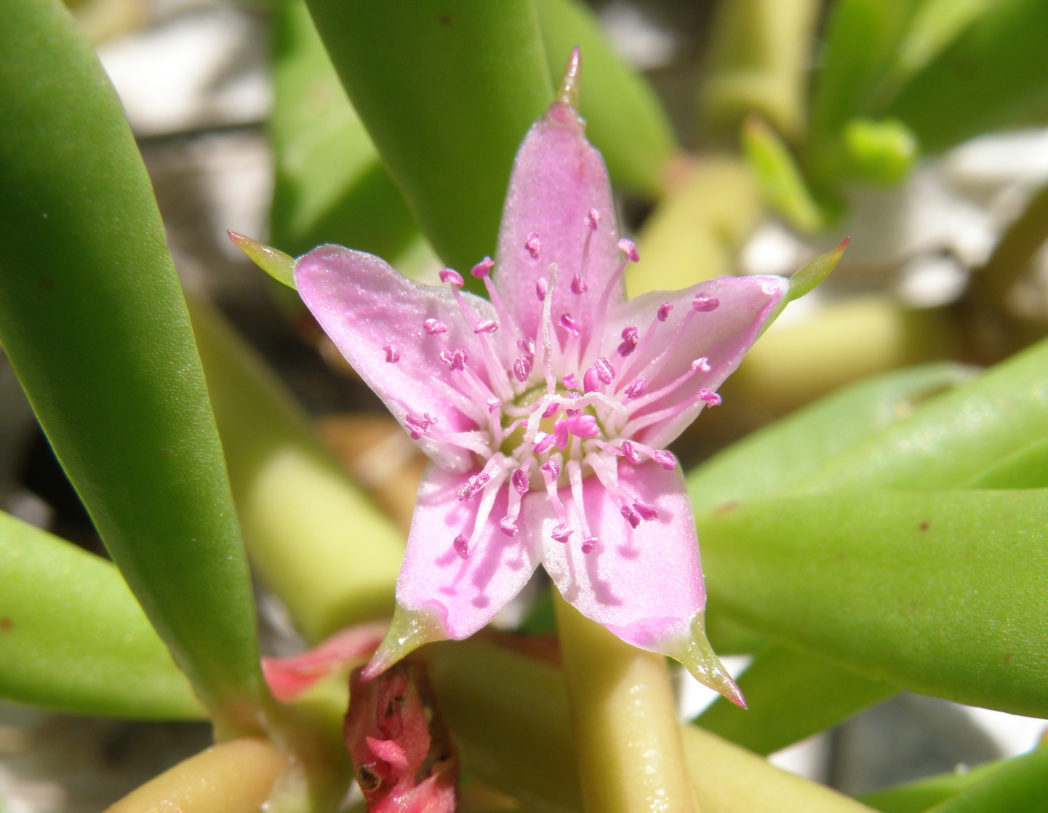Shoreline seapurslane
Pictured above: Shoreline purslane (Sesuvium portulacastrum) by Stacey Matrazzo. Click on terms for botanical definitions. View post as a PDF.
Shoreline seapurslane (Sesuvium portulacastrum) is a sprawling, perennial evergreen wildflower. Its blooms are star-shaped and borne within the leaf axils. They are unique in that they do not have petals. The petal-like formations are actually sepals that have pink- to purple-colored insides, green undersides/outsides and pointy tips. The flowers open and close within a single day. Leaves are linear with tips slightly wider than bases, are thick and fleshy and oppositely arranged. Stems are smooth and succulent and can be yellow-green or reddish. Both leaves and stems are waxy.

Shoreline seapurslane flowers throughout the year. It occurs naturally in salt and freshwater marshes, along beach dunes, and in salt flats. It is critical as a dune sand stabilizer as it catches sand between its leaves and stems.
Shoreline seapurslane leaves can be eaten raw or pickled. They are considerably salty, but can be cooked in water to reduce the saltiness. They are high in vitamin C.
Family: Aizoaceae (Fig-marigold or iceplant family)
Native range: Nearly all coastal counties, as well as Orange and Seminole
To see where natural populations of Shoreline seapurslane have been vouchered, visit florida.plantatlas.usf.edu.
Lifespan: Perennial
Soil: Sandy, acidic to alkaline, moist to dry
Exposure: Full sun
Growth habit: 1–3″ tall; sprawling/mat-forming
Propagation: Division
Florida regions of landscape suitability: North, Central, South
Garden tips: Sea purslane’s mat-forming habit makes it a good groundcover in coastal settings. It requires practically no irrigation or fertilizer and is very tolerant of salt and harsh winds.
Shoreline seapurslane plants are often available at nurseries that specialize in native plants. Visit PlantRealFlorida.org to find a native nursery on your area.
Learn more about Shoreline seapurslane from the Florida Native Plant Society and the Institute for Regional Conservation.

